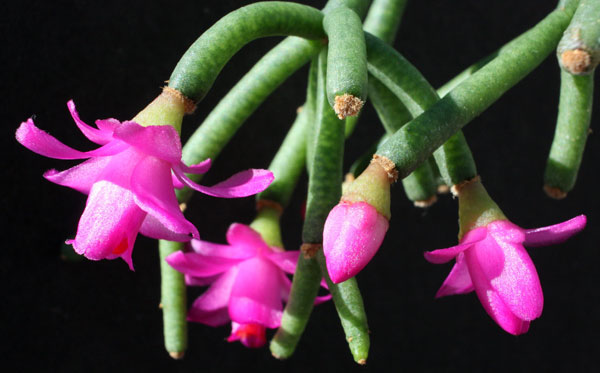Most people are familiar with the yellow-flowered Hatiora salicornioides, but few know – and even fewer grow – the closely related H. herminiae, which is a great pity
This cactus has thin, cylindrical stem sections that branch at the tips into whorls of new sections, producing a neat, bushy plant. Buds are also produced at the tips of the shoots. The flowers are relatively small – about 15mm across – but are brilliant pink in colour, and a plant in full flower can be a memorable sight. In cultivation in the UK the flowers appear during April and May.

Fig. 1 H. herminiae
Hatiora herminiae is native to Brazil, where it grows epiphytically on the trunks of trees, often in fairly open conditions. In cultivation, it appreciates a light, open organic compost – a mixture of chopped coir and finely chopped bark works fine. The plant seems to prefer being kept with its roots on the dry side. However, it also needs humidity to grow well: if the air is too dry, the thin stem sections can shrivel and drop. If you have a growing space that already has sufficient humidity, you are well on the way to success! Otherwise, one simple way to achieve this is just to grow the plant, in its pot, inside a plastic bag – thus keeping a layer of still, and more humid, air around the stems. Regular spraying can also help.

Fig. 2 H. herminiae – flower
The plant is normally propagated from cuttings, which can be rooted in the same conditions as described above for the adult plants. But the flowers are self-fertile, and plants frequently develop pale green pods after flowering. Seeds from these pods can be grown to produce new plants.
Mark Preston
No part of this article or the accompanying pictures may be reproduced without permission. Copyright BCSS & the Author 2018
